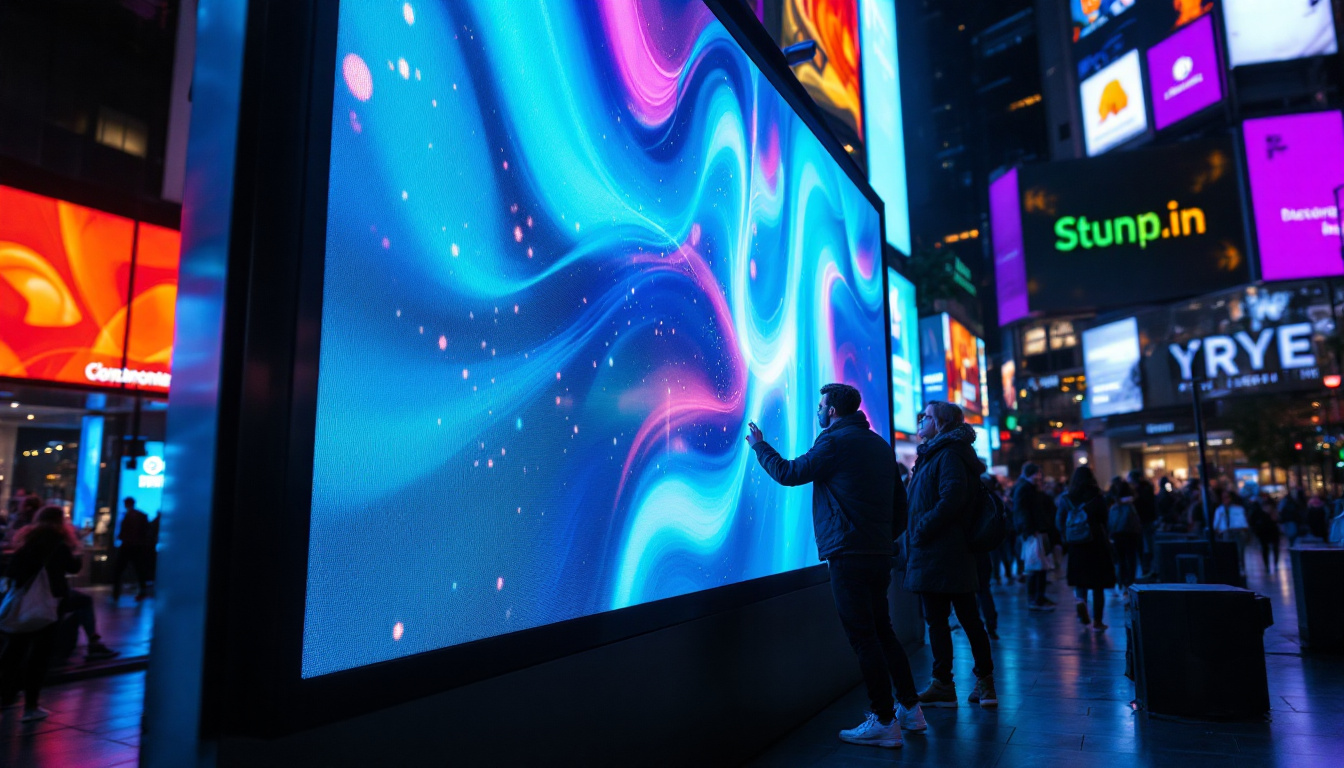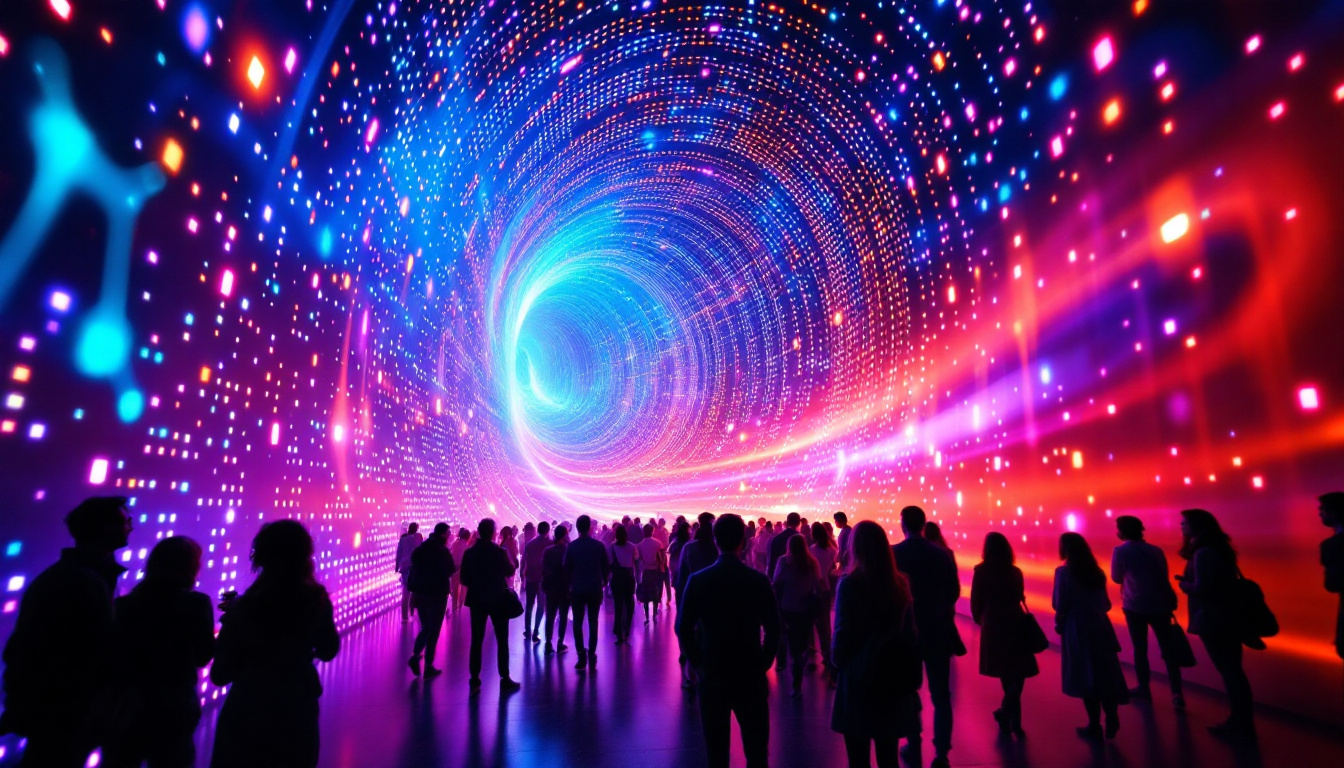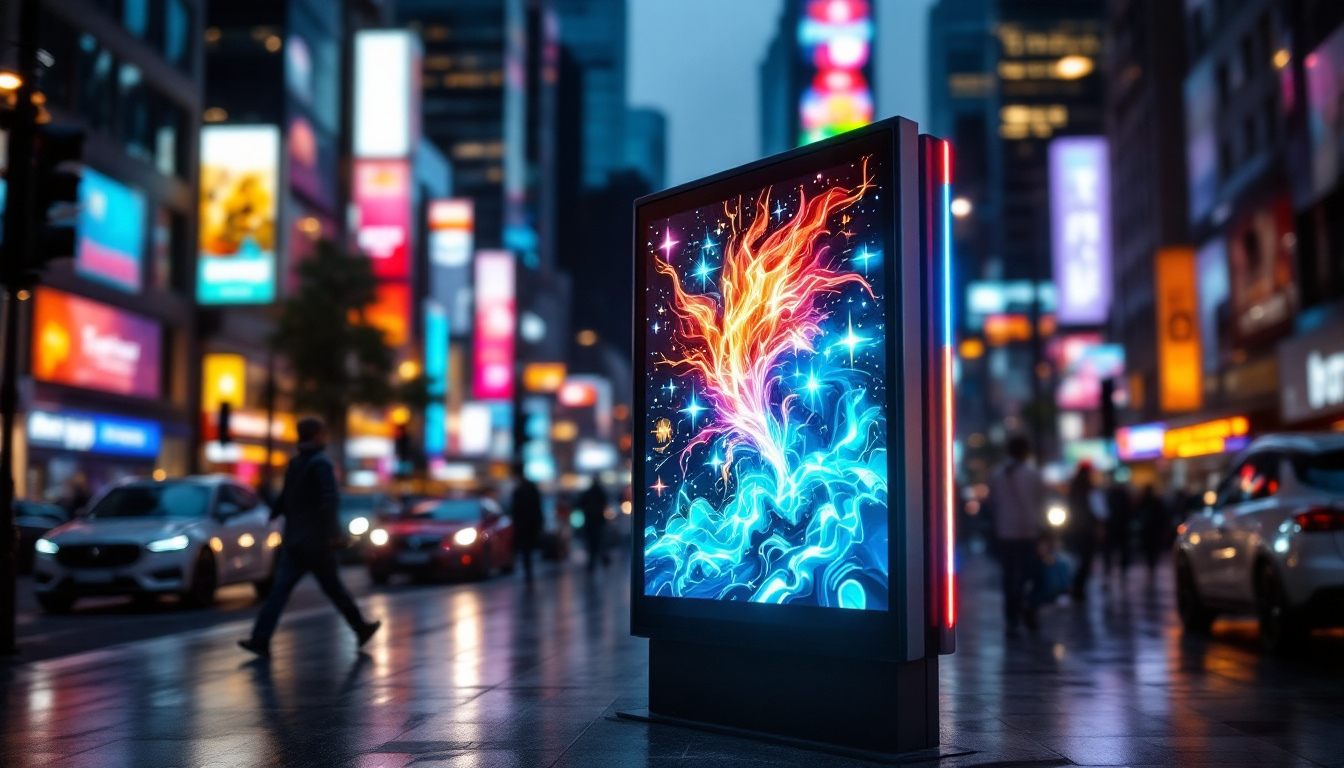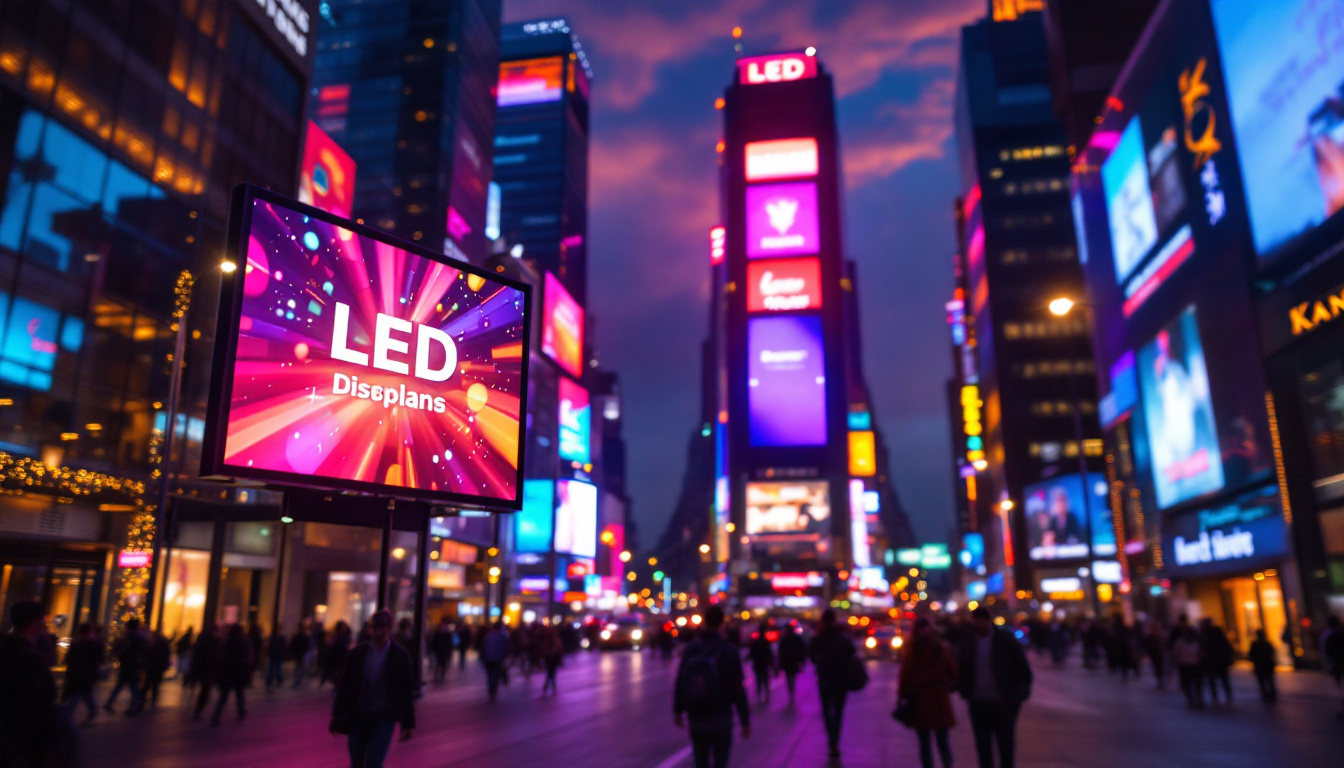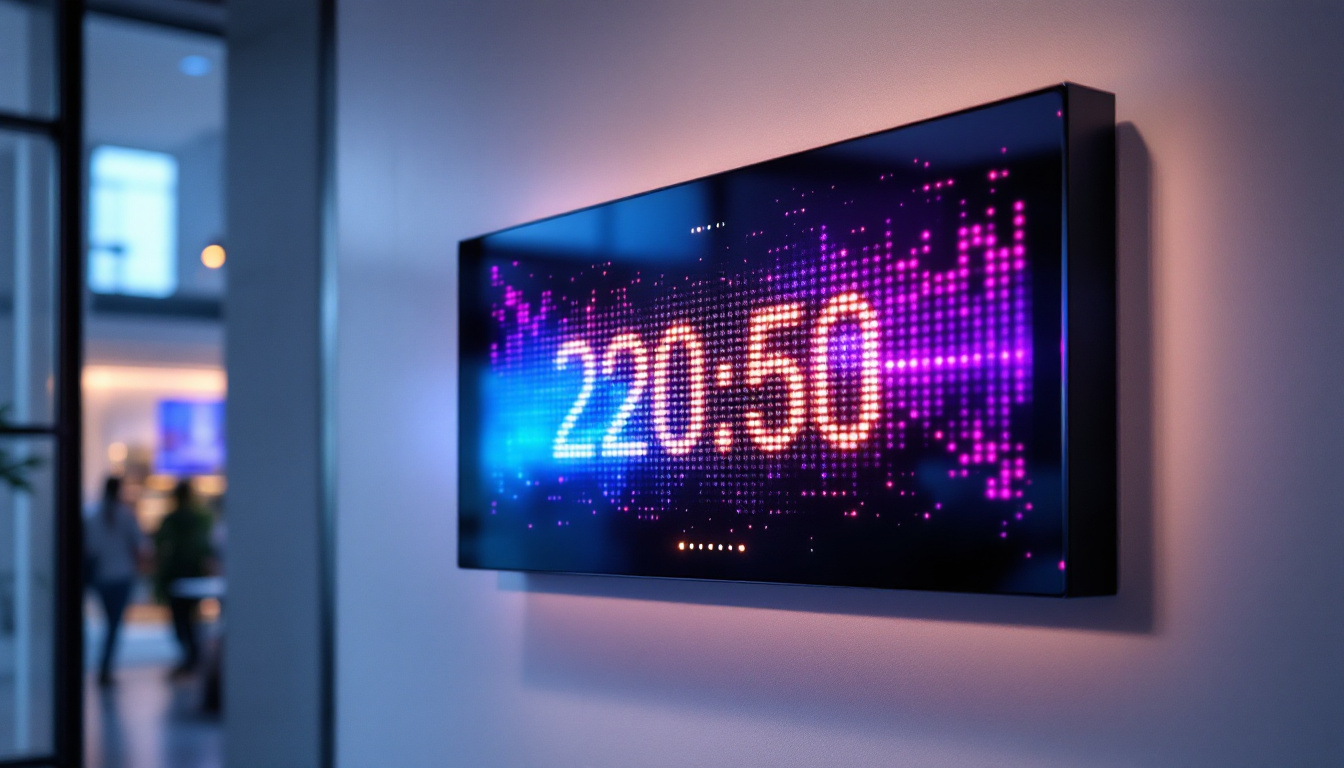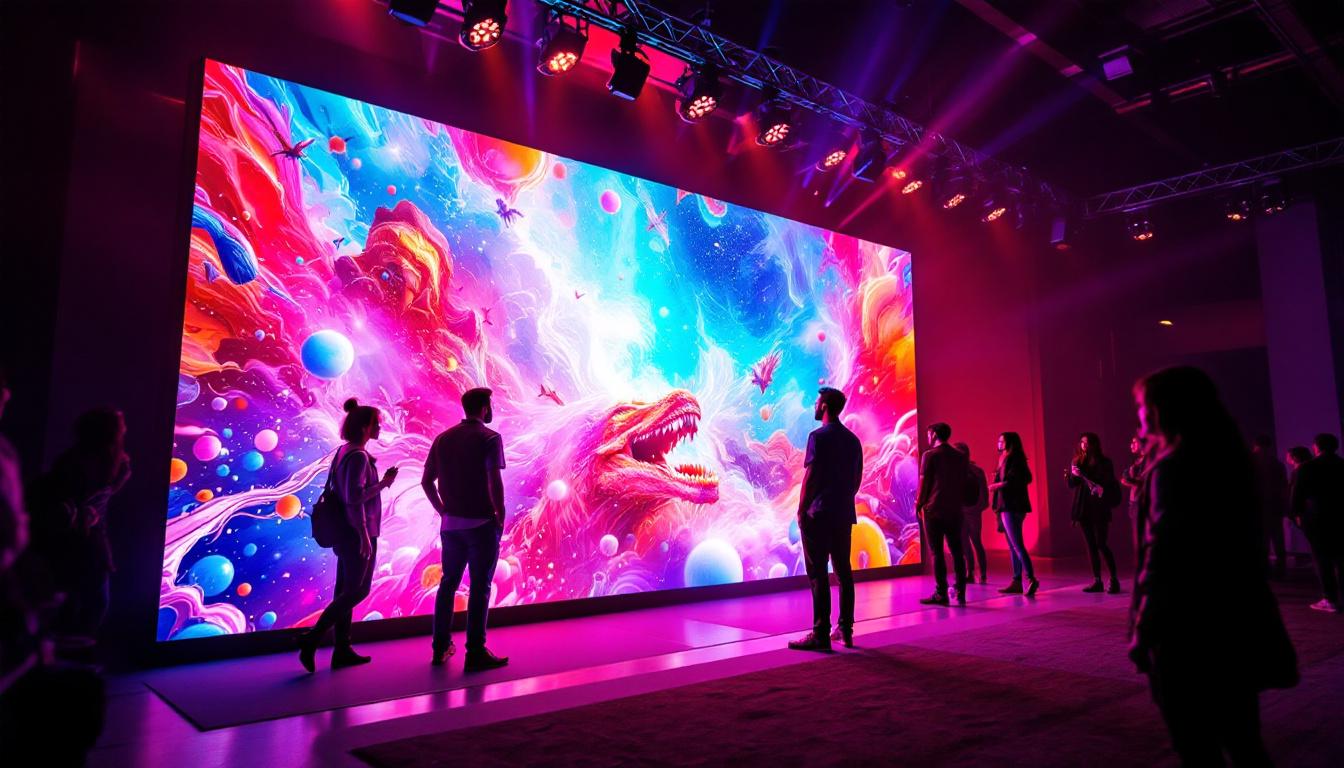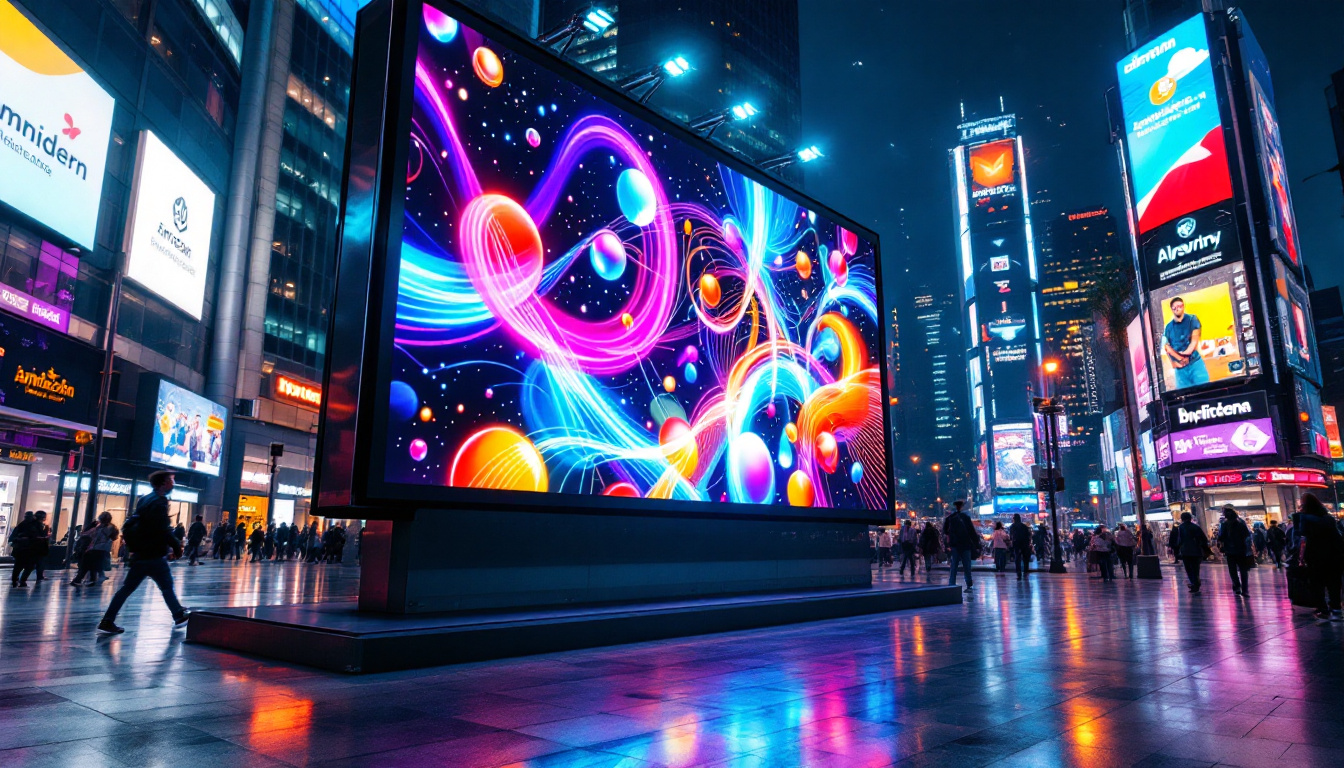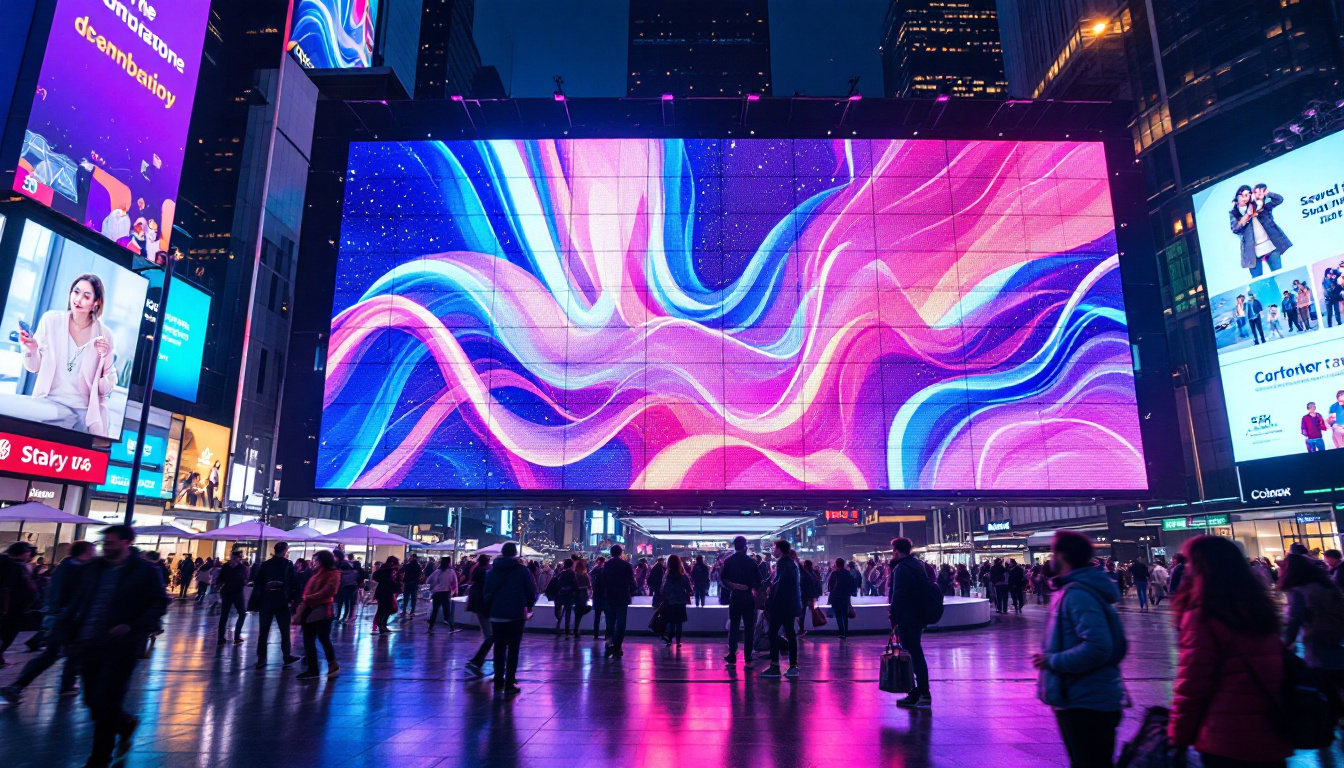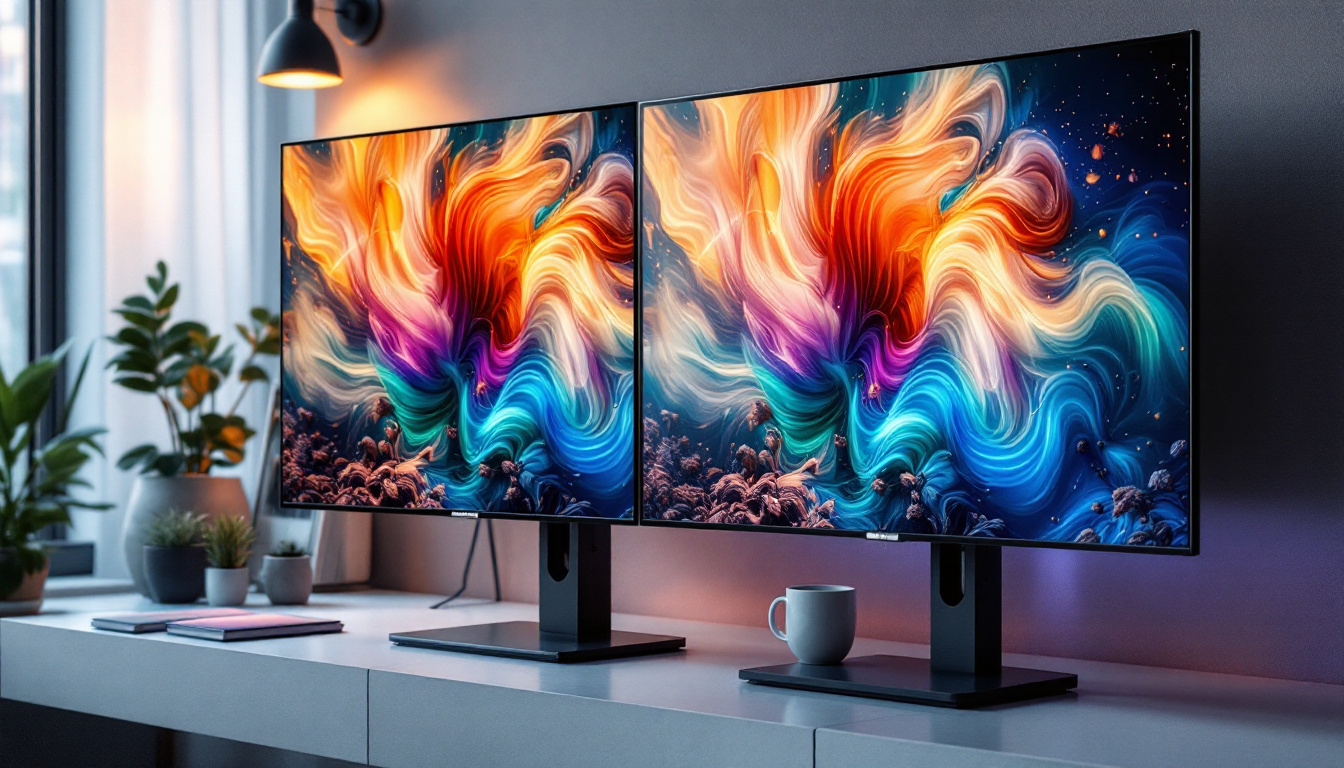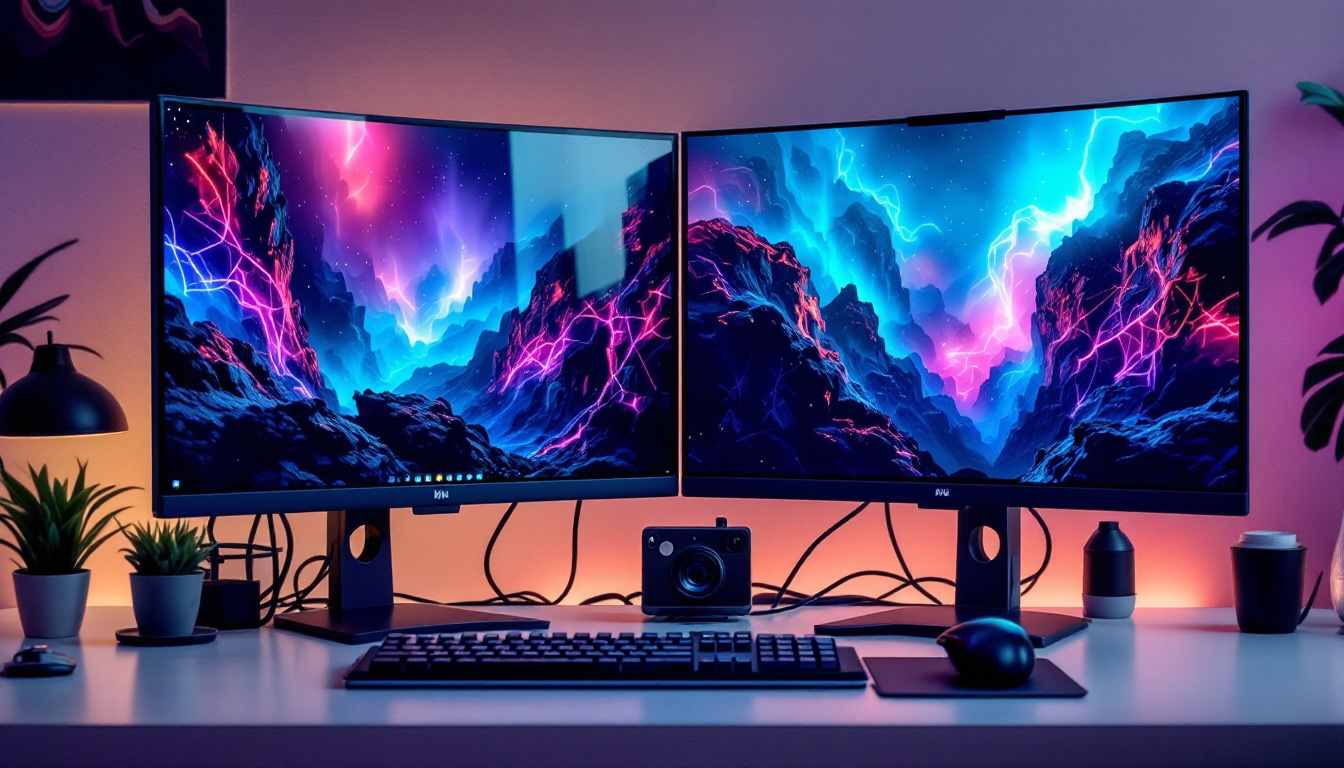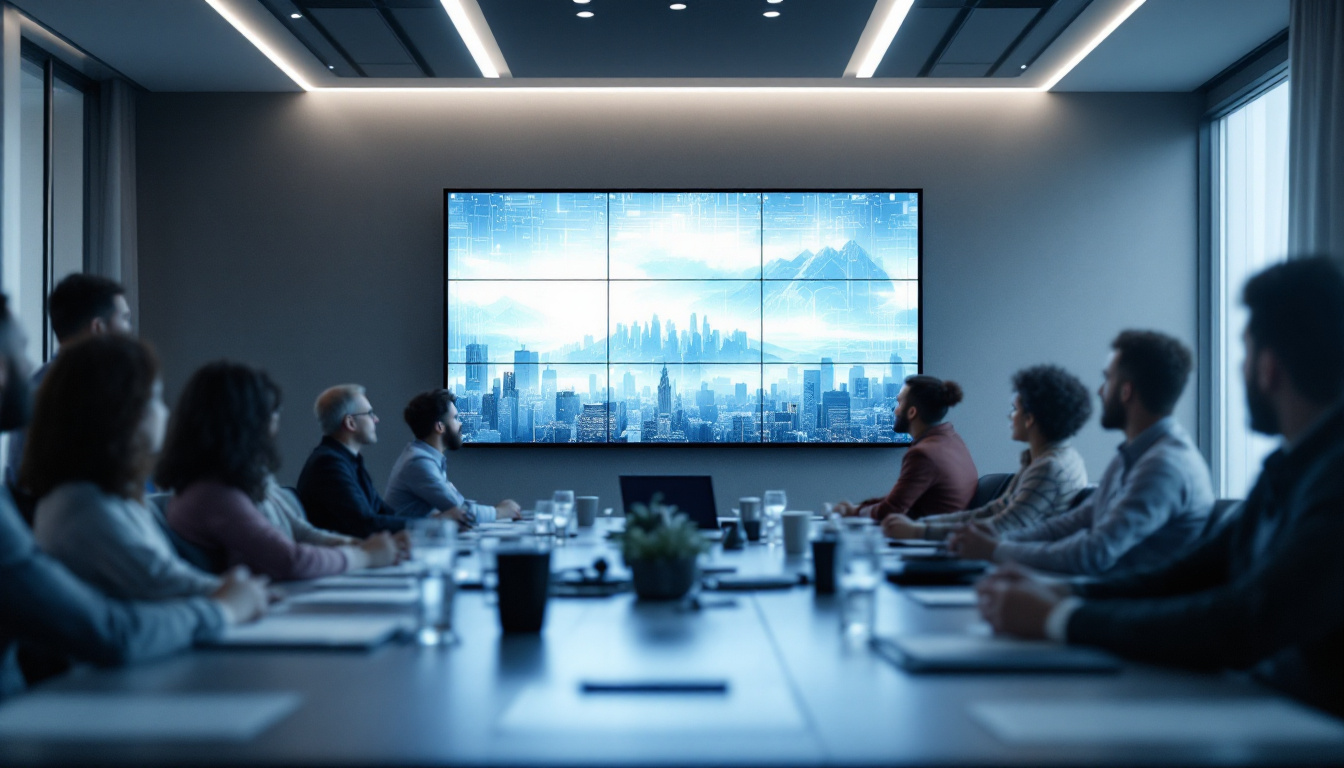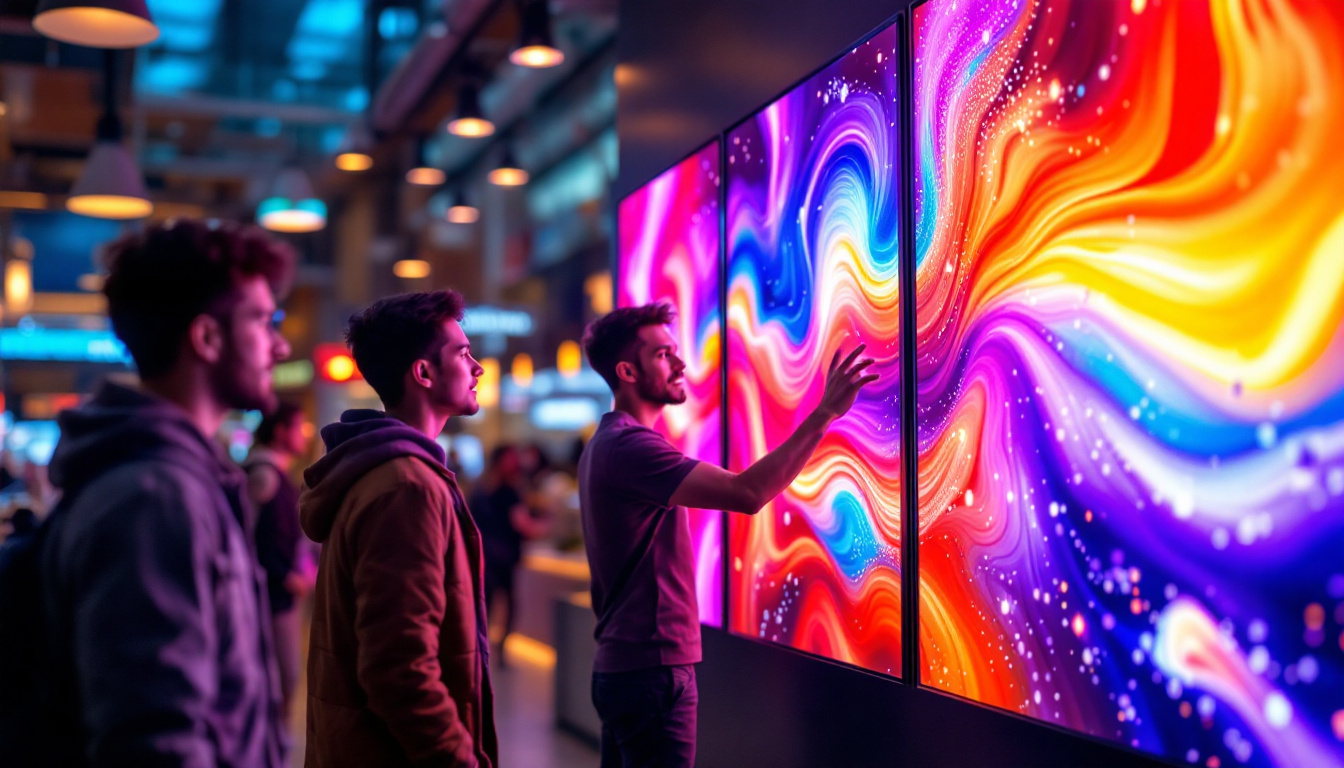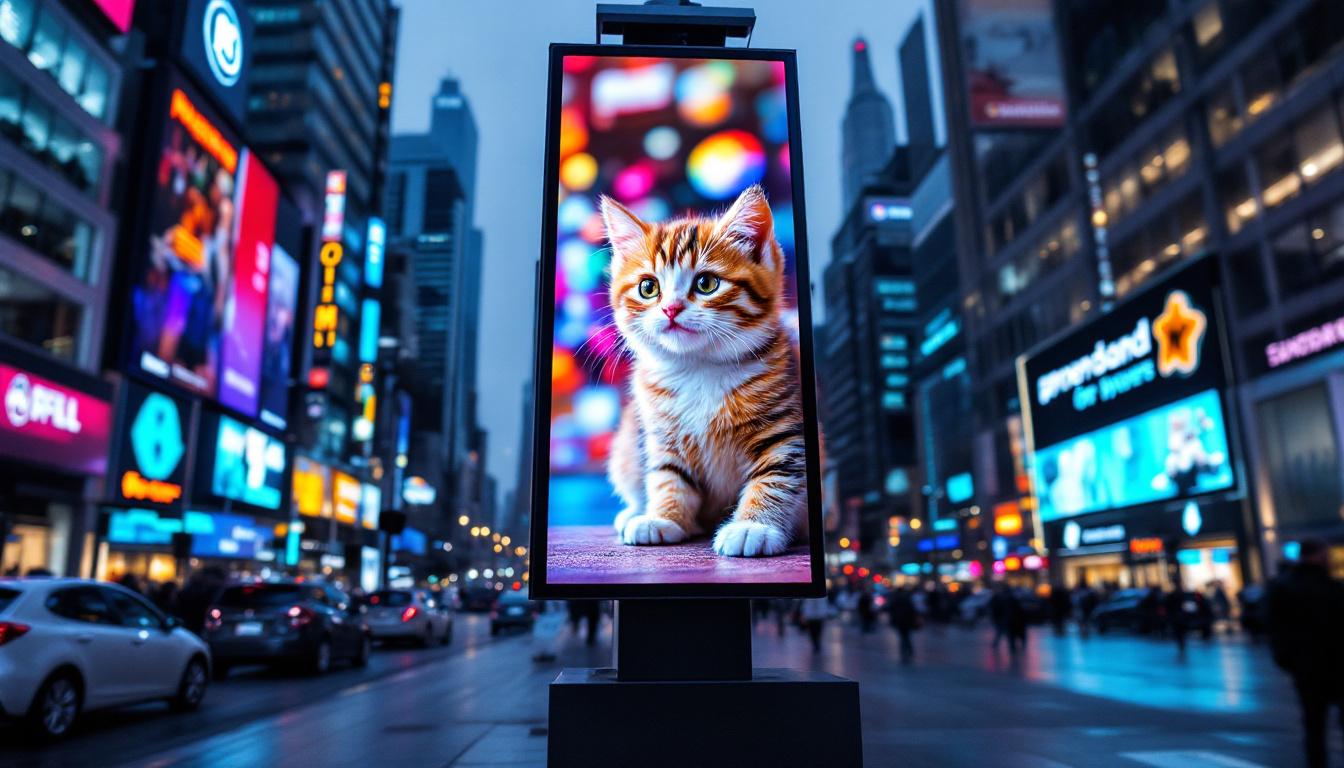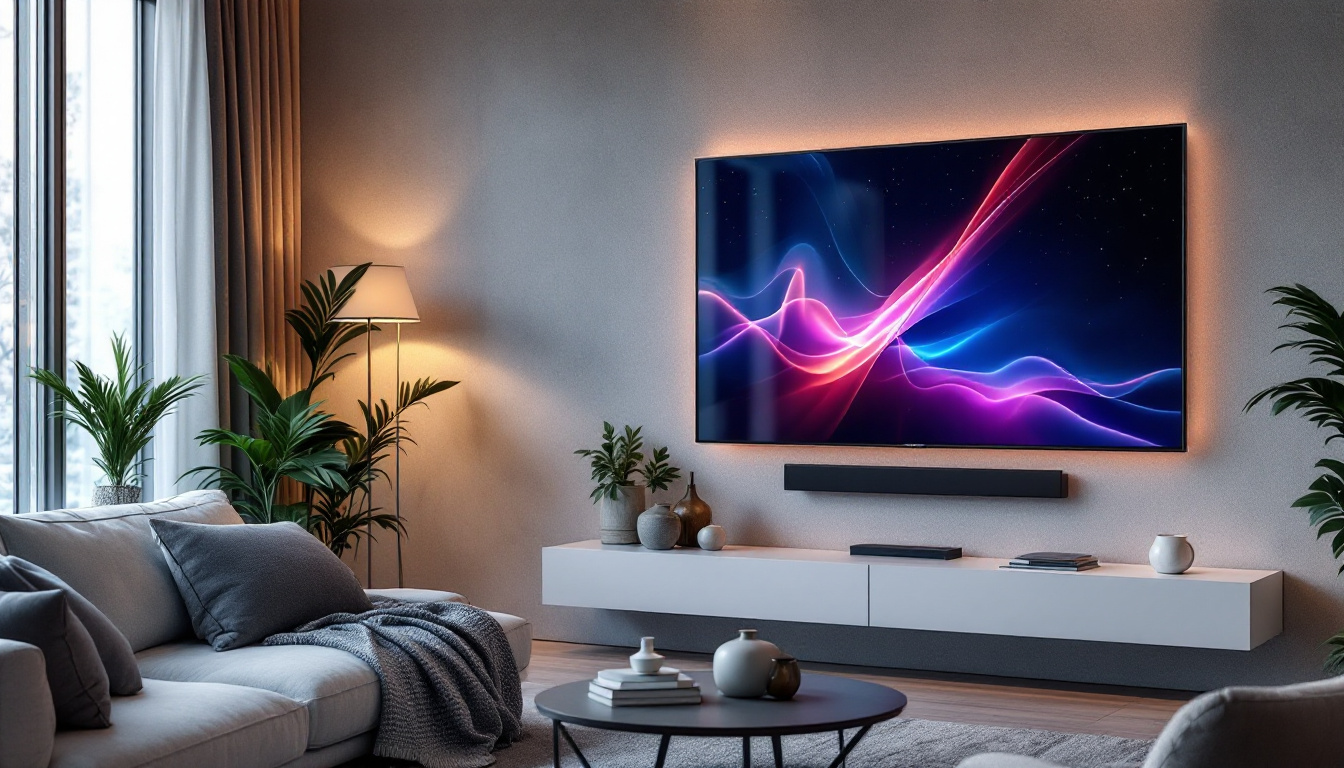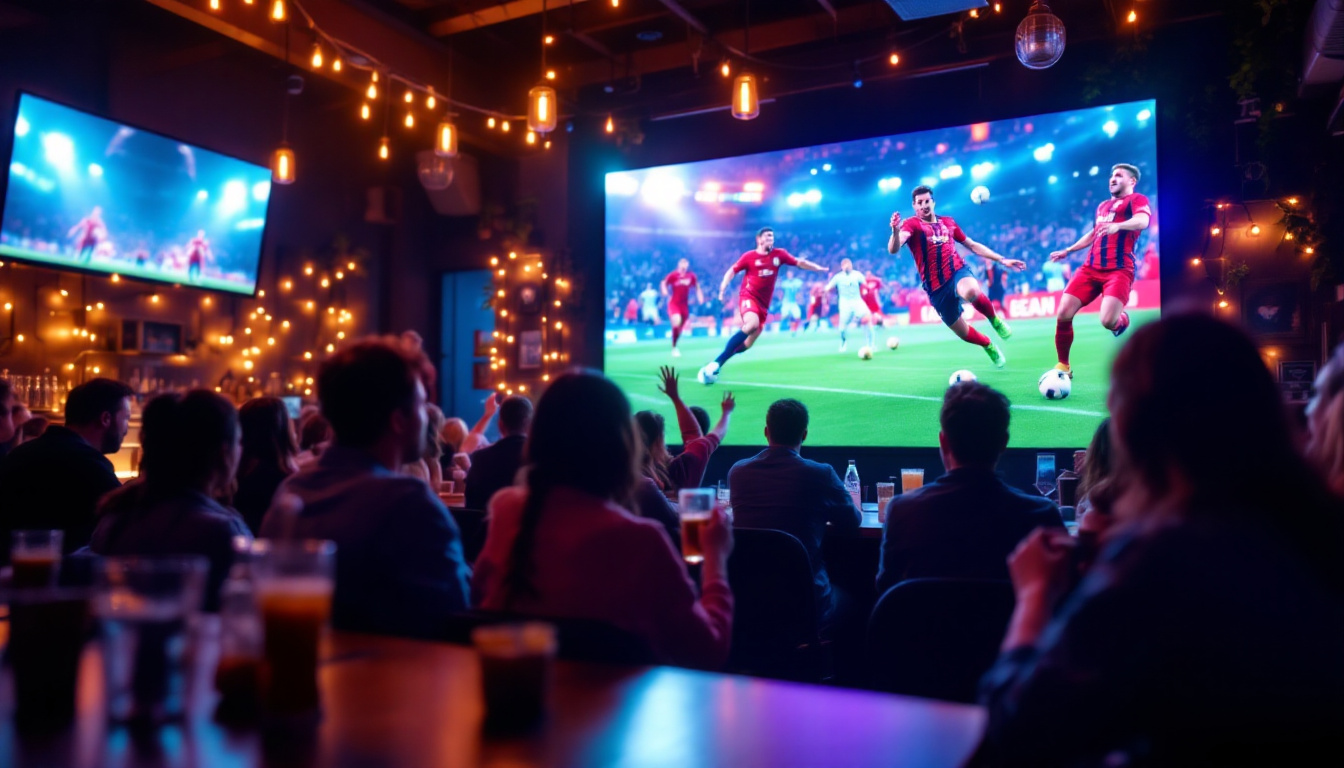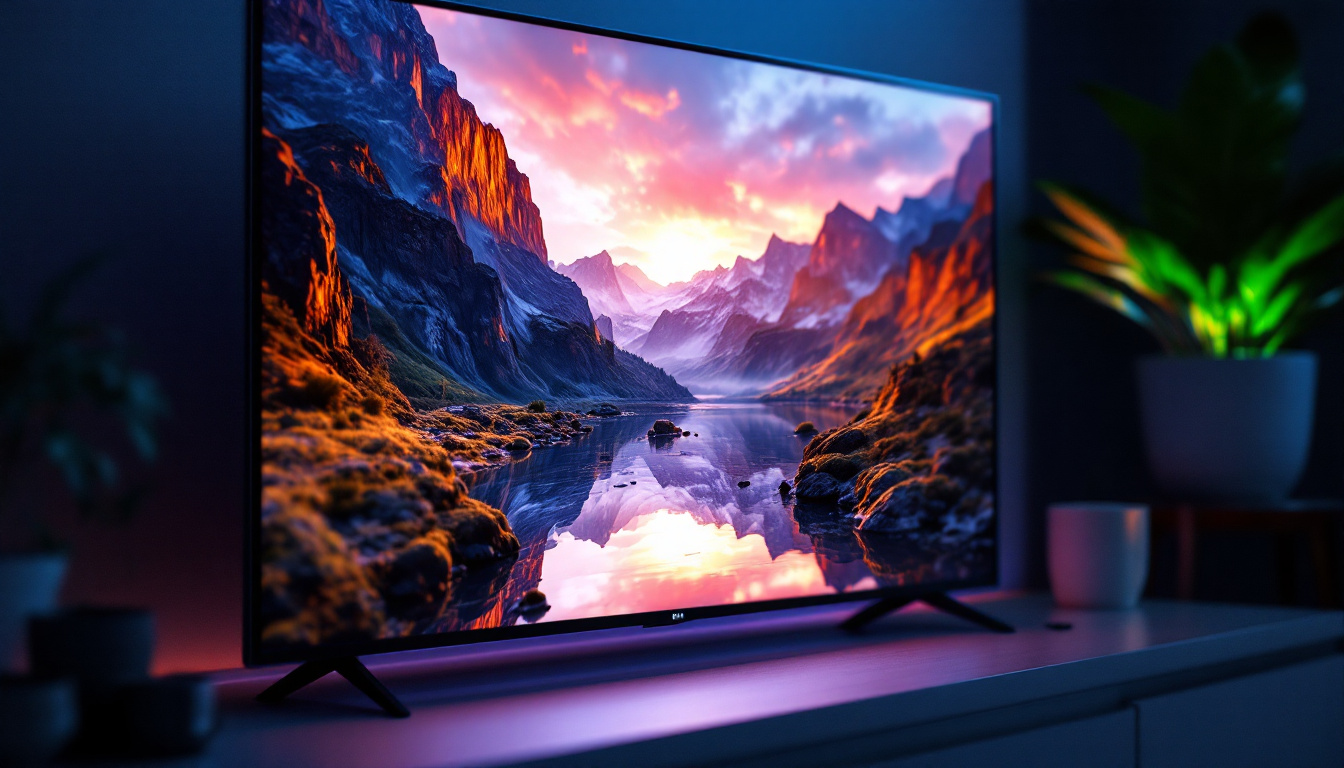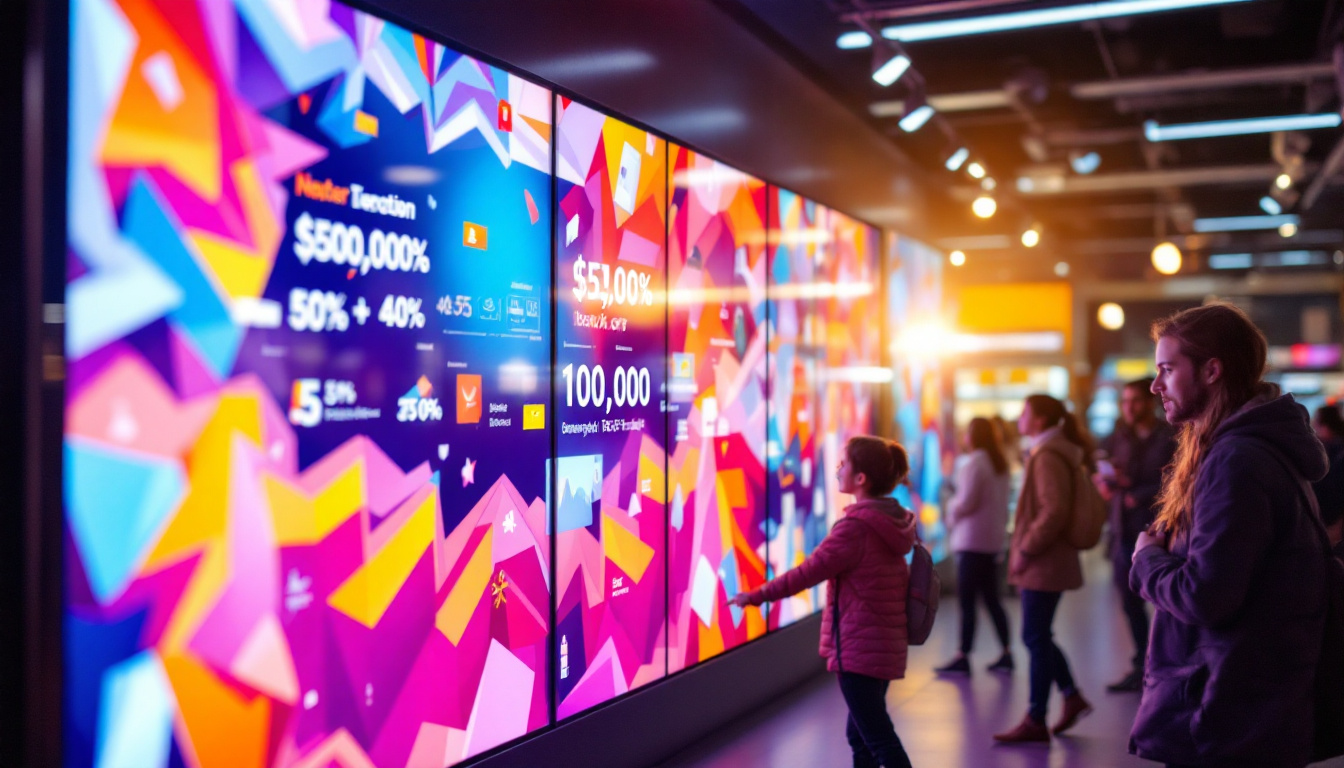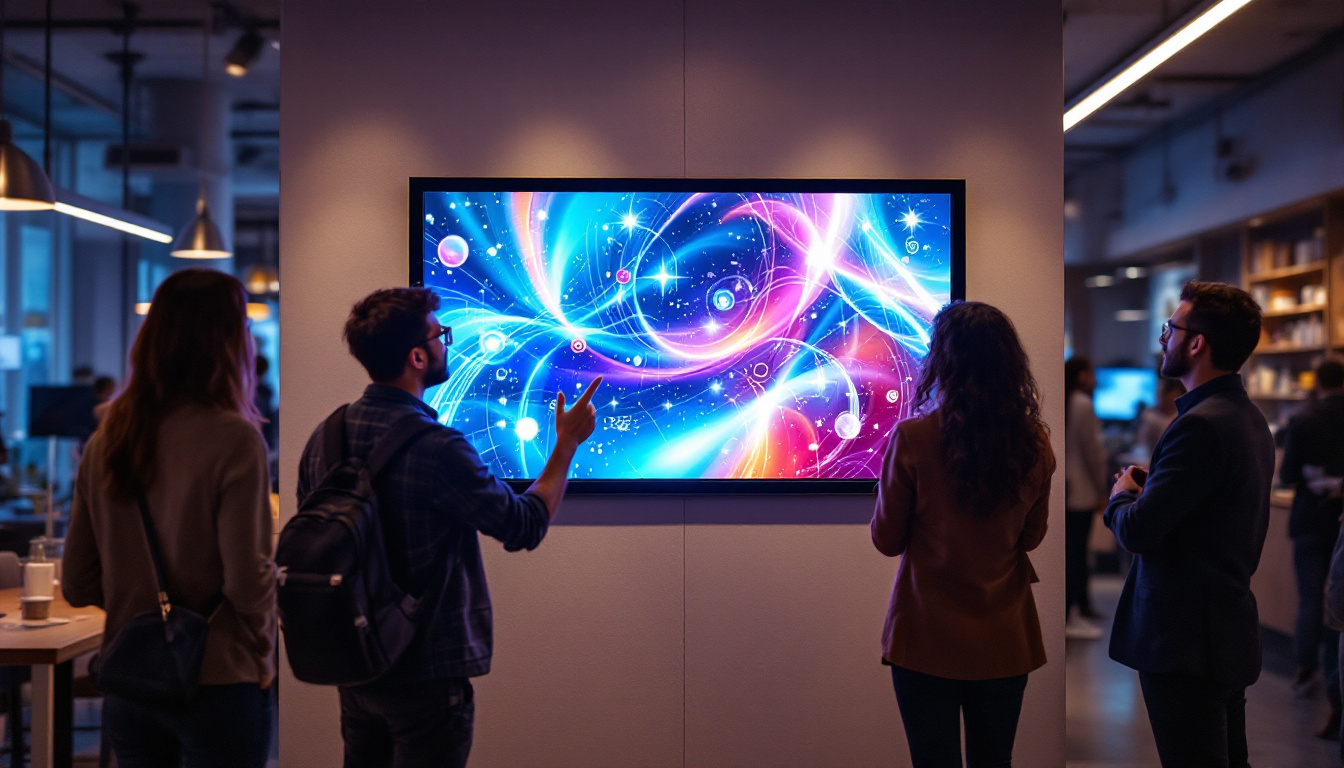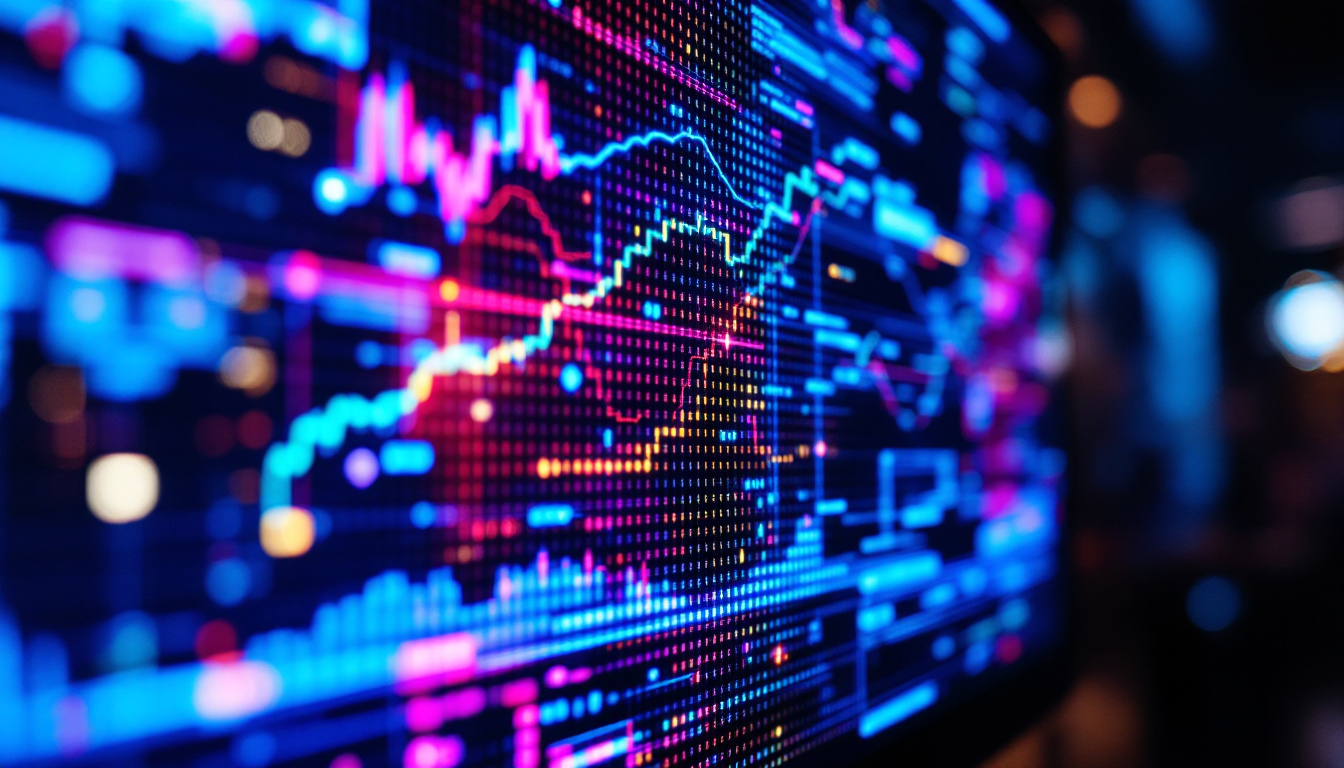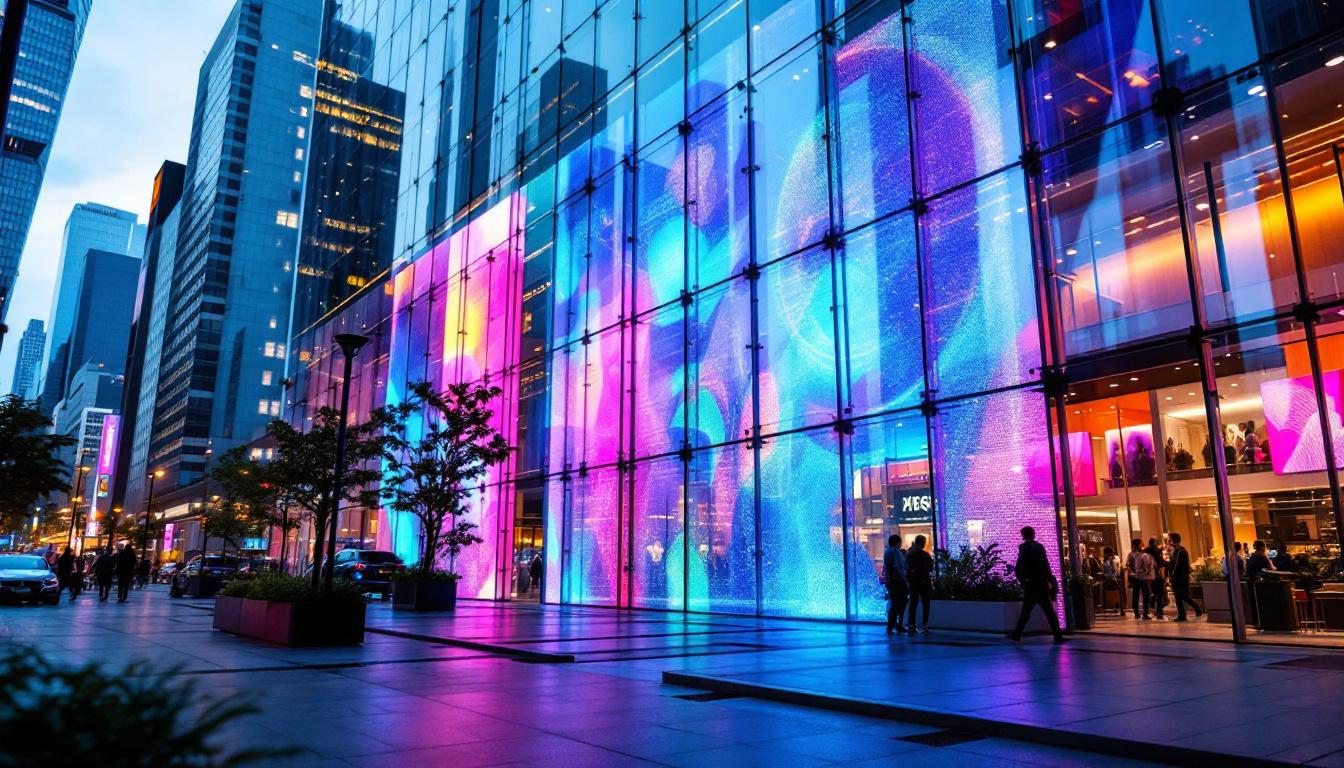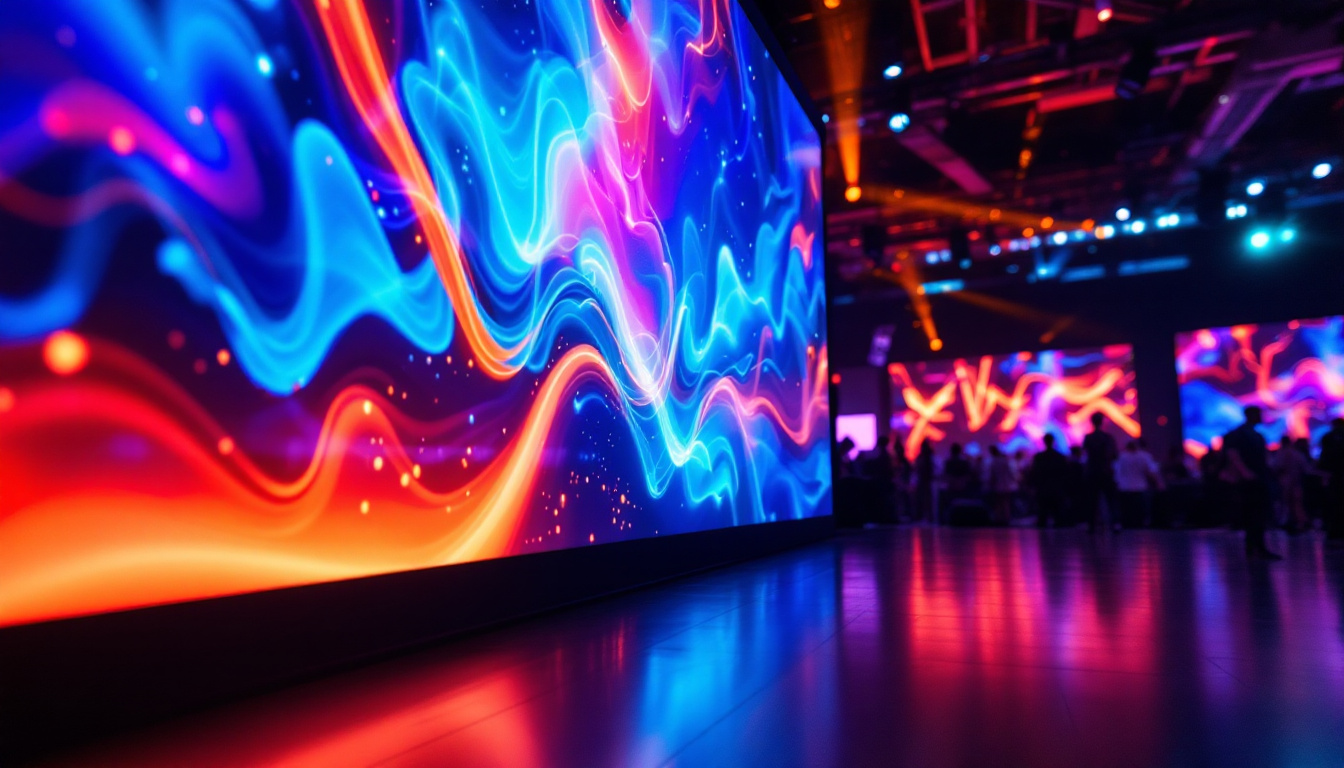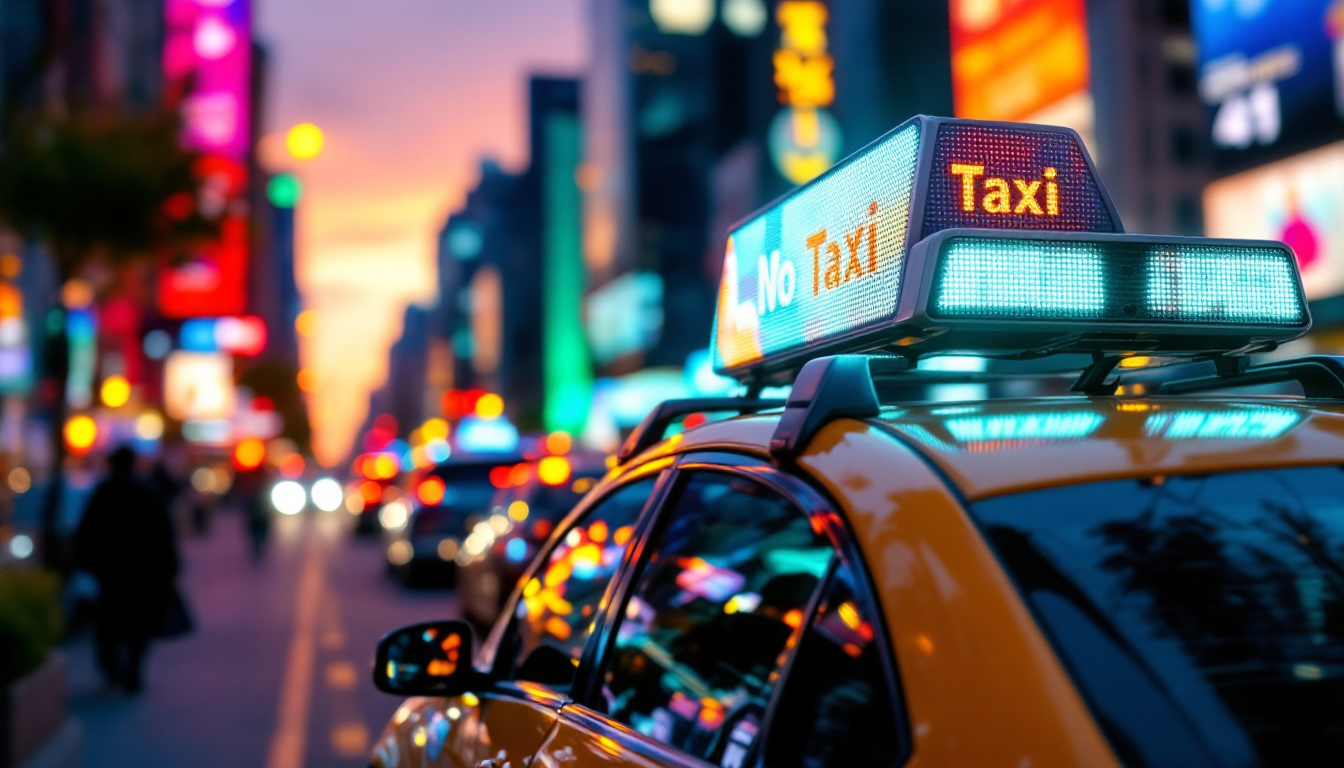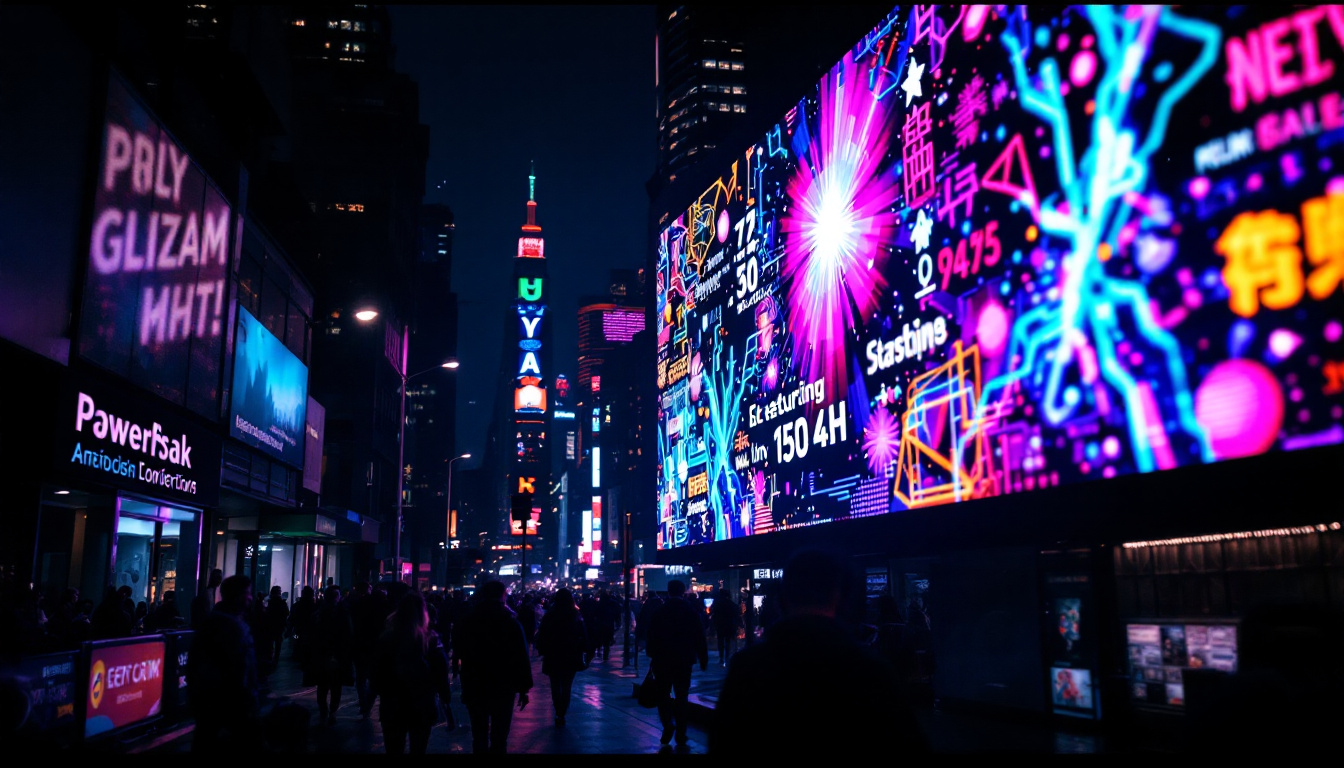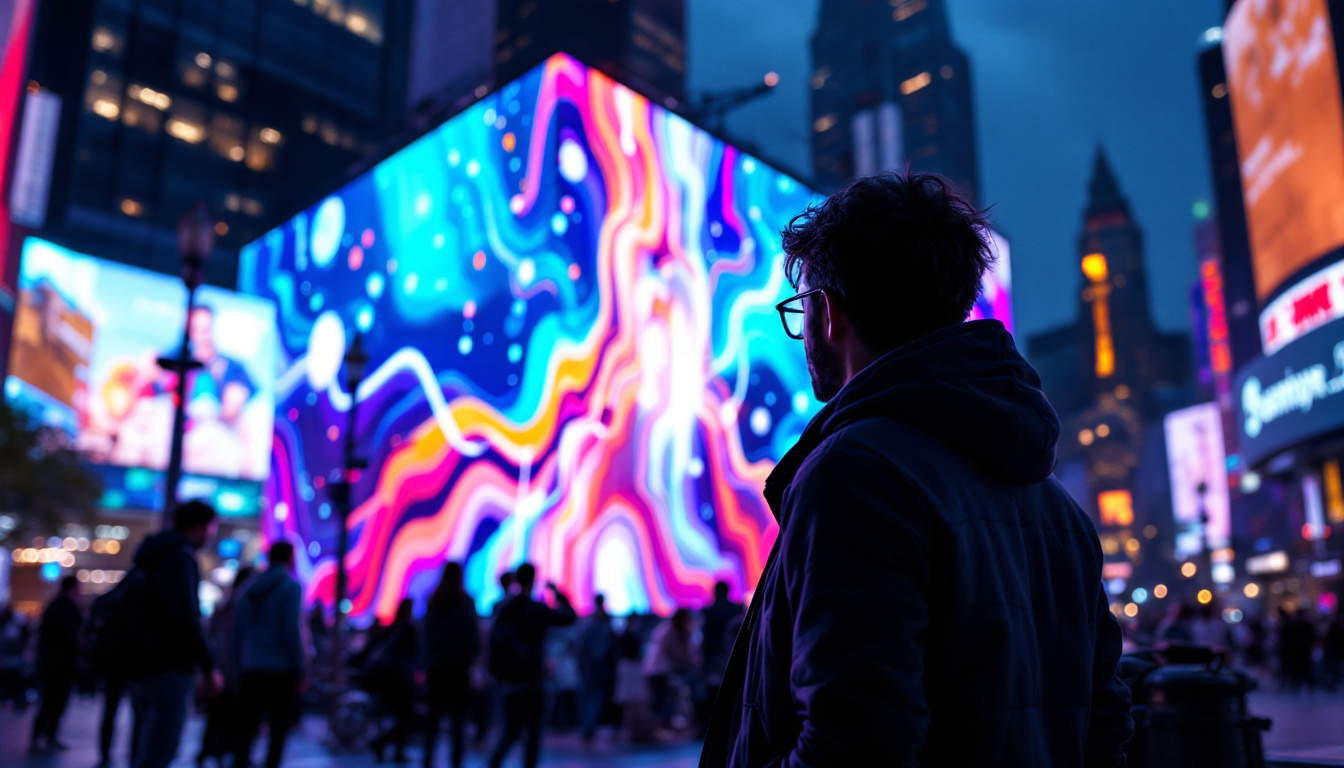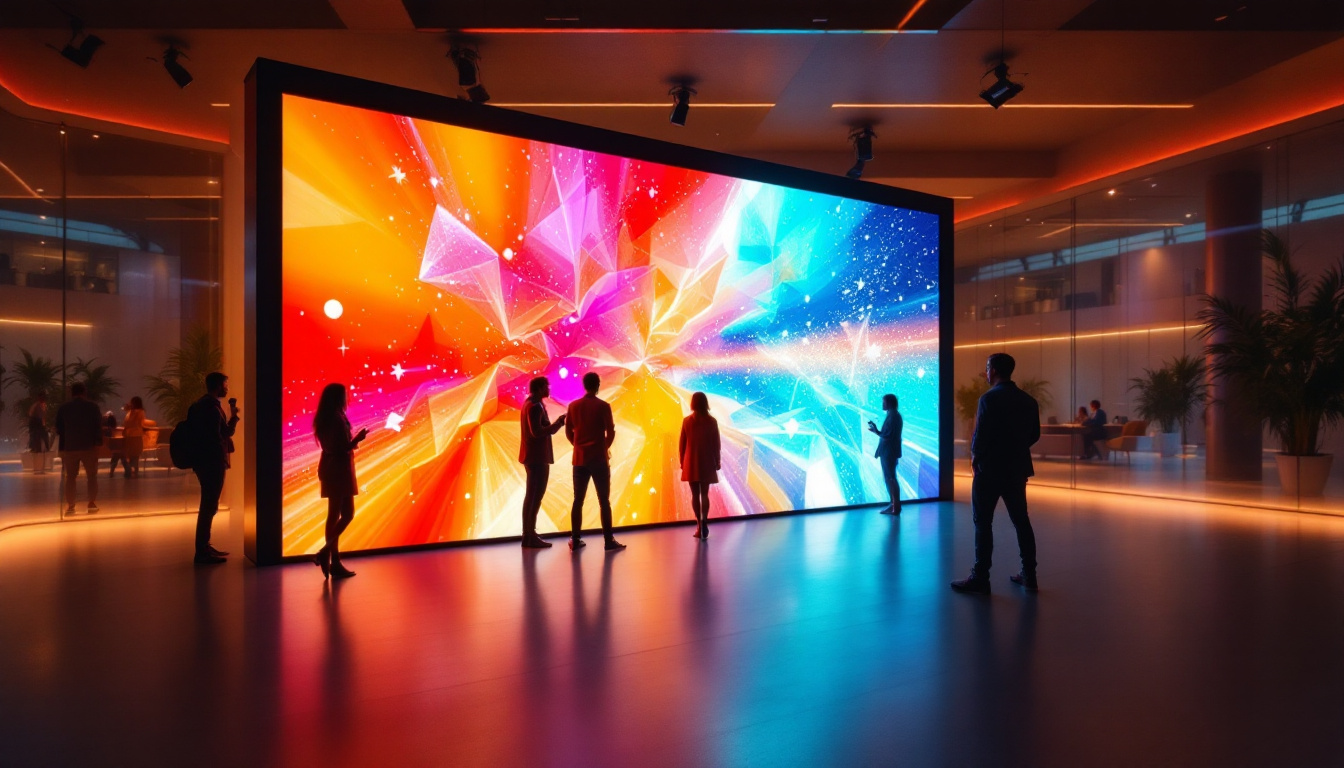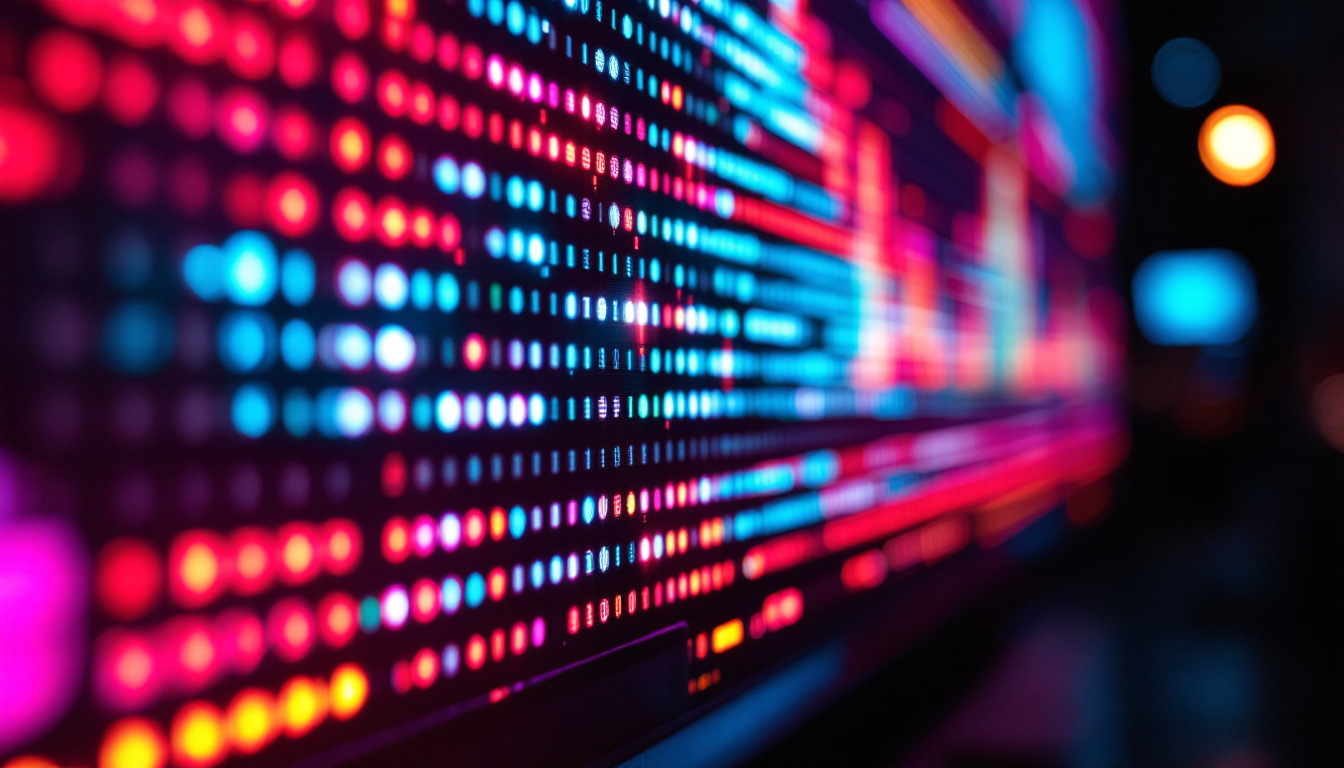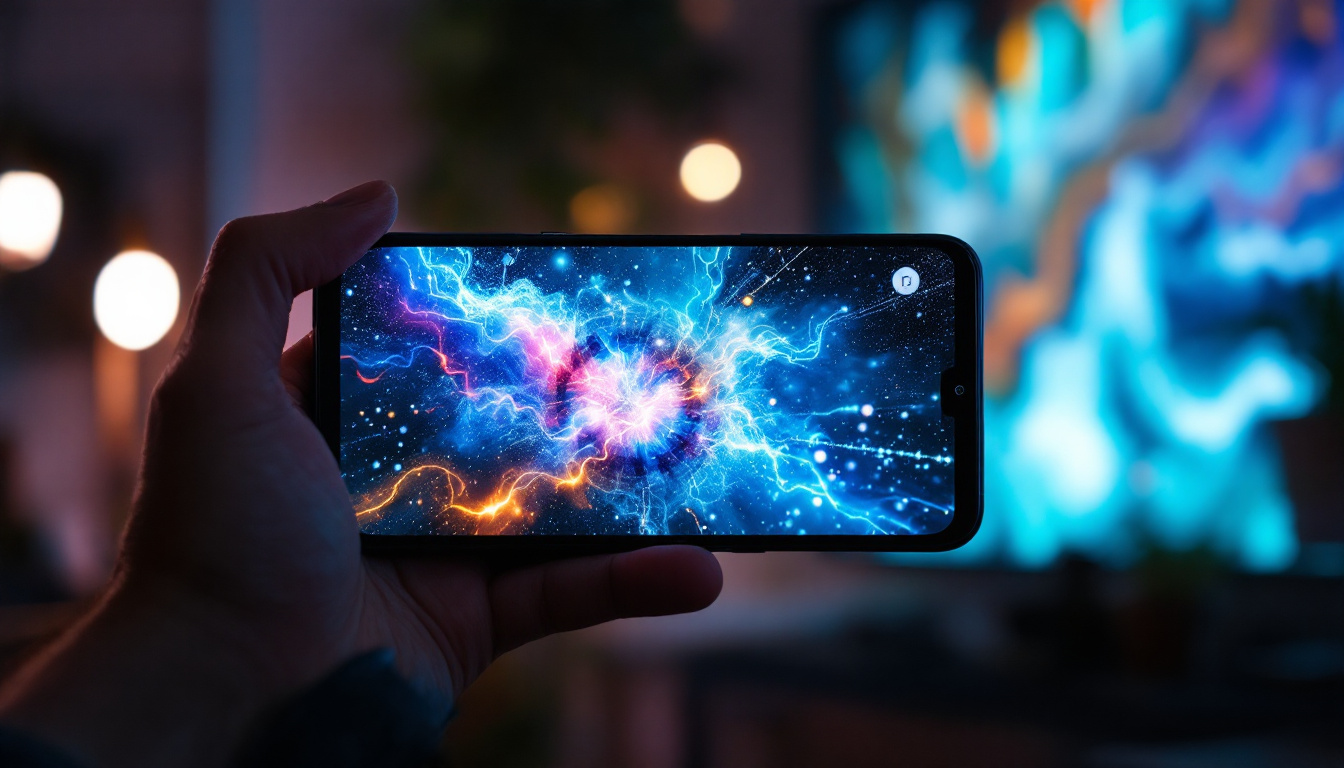In the modern landscape of advertising, LED displays have emerged as a powerful medium for capturing attention and delivering messages effectively. These vibrant screens are not just a trend; they represent a significant evolution in how brands communicate with their audiences. This article delves into the intricacies of LED displays, exploring their technology, benefits, applications, and future trends.
Understanding LED Technology
LED, or Light Emitting Diode, technology has transformed the way visual content is displayed. Unlike traditional screens that rely on backlighting, LED displays utilize tiny diodes that emit light when an electric current passes through them. This fundamental difference provides several advantages that make LED displays the preferred choice for advertising. The energy efficiency of LED technology also plays a significant role in its popularity; these displays consume less power compared to their LCD counterparts, leading to lower operational costs and a reduced environmental footprint.
How LED Displays Work
The heart of an LED display is its array of pixels, each consisting of red, green, and blue (RGB) diodes. By adjusting the intensity of these colors, a wide spectrum of hues can be produced, allowing for vibrant and dynamic visuals. The pixels are arranged in a grid, and when powered, they create images and videos that can be seen from various distances. This technology not only enhances the clarity of the visuals but also allows for rapid refresh rates, which is crucial for displaying high-speed content such as sports events or fast-paced advertisements.
Moreover, the modular nature of LED technology means that displays can be constructed in various sizes and shapes, making them versatile for different advertising needs. Whether it’s a massive billboard or a small screen in a retail store, LED technology adapts to the requirements of the space. The flexibility in design also allows for creative installations, such as curved or irregularly shaped displays, which can enhance the viewer’s experience and engagement.
Types of LED Displays
There are several types of LED displays, each tailored for specific applications. The most common types include:
- Indoor LED Displays: These screens are designed for use in controlled environments, such as shopping malls and conference rooms. They typically have a higher pixel density, resulting in sharper images viewed from shorter distances. Indoor displays often incorporate advanced features such as touch sensitivity, enabling interactive advertising experiences that engage customers more effectively.
- Outdoor LED Displays: Built to withstand various weather conditions, outdoor displays are larger and brighter, ensuring visibility even in direct sunlight. They are commonly used for billboards and event signage. These displays often come with enhanced durability features, such as protective coatings and robust casings, to ensure longevity and consistent performance in challenging environments.
- Transparent LED Displays: These innovative screens allow for visibility through the display while still showing content. They are often used in retail environments to maintain an open feel while advertising products. This type of display not only maximizes the use of space but also creates an eye-catching effect that can draw customers’ attention without obstructing their view of the merchandise behind the screen.
The Advantages of LED Displays
LED displays offer numerous benefits that make them an attractive option for advertisers. From their energy efficiency to their ability to deliver high-quality visuals, these screens have revolutionized the advertising industry.
Energy Efficiency
One of the standout features of LED technology is its energy efficiency. Compared to traditional lighting methods, LED displays consume significantly less power. This not only reduces operational costs but also minimizes the environmental impact of advertising. Brands that prioritize sustainability can leverage this aspect to enhance their corporate responsibility image. Additionally, the longevity of LED displays means that they require less frequent replacements, further contributing to a reduction in waste and resource consumption.
High-Quality Visuals
LED displays are renowned for their ability to produce bright, vivid colors and high contrast ratios. This capability ensures that advertisements are eye-catching and memorable. The clarity and sharpness of images on LED screens can captivate audiences, making it easier for brands to convey their messages effectively. Furthermore, the technology behind LED displays allows for superior performance in various lighting conditions, ensuring that visuals remain striking even in direct sunlight or dim environments. This adaptability makes LED displays a versatile choice for both indoor and outdoor advertising.
Dynamic Content Capabilities
Unlike static billboards, LED displays can showcase dynamic content, including videos, animations, and real-time updates. This flexibility allows advertisers to change their messages quickly, tailoring them to specific audiences or events. For instance, a retail store can promote a flash sale during peak hours, maximizing engagement and sales opportunities. Moreover, the ability to integrate social media feeds or live news updates can create a more interactive experience for viewers, encouraging them to engage with the content on a deeper level. This interactivity not only enhances viewer retention but also fosters a sense of community around the brand, as audiences can see their own contributions reflected in the advertising space.
Applications of LED Displays
The versatility of LED displays allows them to be used in various sectors, enhancing advertising strategies across multiple platforms. Here are some notable applications:
Retail Advertising
In retail environments, LED displays play a crucial role in attracting customers and enhancing the shopping experience. From large storefront screens to smaller displays inside the store, they can showcase promotions, highlight new products, and create an immersive atmosphere. The ability to change content quickly allows retailers to adapt to trends and customer preferences in real-time. Furthermore, the vivid colors and high resolution of LED technology can significantly increase customer engagement, as shoppers are more likely to be drawn to dynamic and visually appealing content. Retailers can also leverage data analytics to tailor their messages based on customer demographics and shopping behavior, ensuring that the right message reaches the right audience at the right time.
Event Marketing
Events such as concerts, sports games, and trade shows benefit immensely from LED displays. They can be used for stage backdrops, live feeds, and interactive installations, engaging attendees and enhancing their experience. The dynamic nature of LED technology allows event organizers to create captivating visuals that resonate with audiences. Additionally, LED displays can facilitate social media integration, allowing live feeds of tweets, Instagram posts, and audience interactions to be displayed in real-time, fostering a sense of community and participation. This interactivity not only keeps attendees engaged but also encourages them to share their experiences online, amplifying the event’s reach beyond the physical venue.
Transportation Hubs
Airports, train stations, and bus terminals utilize LED displays for advertising and information dissemination. These screens can provide real-time updates on schedules, delays, and other essential information while simultaneously displaying advertisements. The high visibility of these displays ensures that messages reach a large audience effectively. Moreover, the use of LED technology in these environments enhances safety by providing clear and bright signage that can be easily seen from a distance, even in low-light conditions. This functionality is particularly important in emergency situations, where timely information can make a significant difference. Additionally, the ability to program these displays for multilingual content caters to the diverse populations that frequent transportation hubs, making information accessible to all travelers.
Challenges and Considerations
While LED displays offer numerous advantages, there are also challenges and considerations that advertisers must keep in mind. Understanding these factors can help in making informed decisions when integrating LED technology into advertising strategies.
Initial Investment Costs
The initial cost of purchasing and installing LED displays can be significant. Although the long-term savings in energy and maintenance can offset these costs, businesses must assess their budgets and return on investment carefully. It’s essential to consider not just the purchase price but also the potential impact on sales and brand visibility.
Content Management
Creating and managing content for LED displays requires a strategic approach. Advertisers must ensure that the content is engaging, relevant, and updated regularly. This may involve hiring specialized personnel or investing in content management systems. The effectiveness of LED advertising is largely dependent on the quality of the content displayed.
Regulatory Compliance
In many regions, there are regulations governing the use of digital signage, especially in outdoor settings. Advertisers must familiarize themselves with local laws regarding brightness levels, content restrictions, and placement to avoid fines or legal issues. Compliance is crucial to ensure that advertising efforts are both effective and lawful.
The Future of LED Displays in Advertising
The future of LED displays in advertising looks promising, with ongoing advancements in technology and creative applications. As brands continue to seek innovative ways to engage consumers, LED displays are likely to evolve further.
Integration with Augmented Reality
One of the most exciting trends is the integration of LED displays with augmented reality (AR). This combination allows for interactive experiences that can captivate audiences in unprecedented ways. For instance, consumers could interact with virtual elements overlaid on the real world, enhancing their engagement with the brand.
Smart Technology and Automation
As smart technology continues to advance, LED displays will likely become more automated and connected. This could include features such as real-time data analytics, allowing advertisers to tailor their content based on audience demographics and behaviors. The ability to adapt in real-time will enhance the effectiveness of advertising campaigns.
Sustainability Innovations
With the growing emphasis on sustainability, the future of LED displays may also see innovations aimed at reducing environmental impact. This could include the development of recyclable materials, improved energy efficiency, and initiatives to offset carbon footprints. Brands that prioritize sustainability will likely resonate more with eco-conscious consumers.
Conclusion
LED displays have transformed the advertising landscape, offering dynamic, engaging, and visually striking options for brands looking to capture attention. Their versatility, energy efficiency, and ability to deliver high-quality visuals make them a preferred choice in various sectors. While challenges such as initial costs and content management exist, the benefits far outweigh the drawbacks.
As technology continues to advance, the future of LED displays in advertising is bright. With innovations in AR, smart technology, and sustainability, brands have an opportunity to create memorable experiences that resonate with their audiences. Embracing LED technology is not just a trend; it is a strategic move towards a more engaging and effective advertising approach.
Discover LumenMatrix LED Display Solutions
Ready to elevate your advertising strategy with the latest in LED display technology? Look no further than LumenMatrix, a pioneer in crafting immersive visual experiences that captivate and engage. From versatile Indoor and Outdoor LED Wall Displays to innovative solutions like Vehicle LED Displays, LED Posters, and Transparent LED Displays, LumenMatrix offers a wide array of options tailored to your unique branding needs. Embrace the future of advertising and check out LumenMatrix LED Display Solutions today to transform your visual communication and make a lasting impression on your audience.

